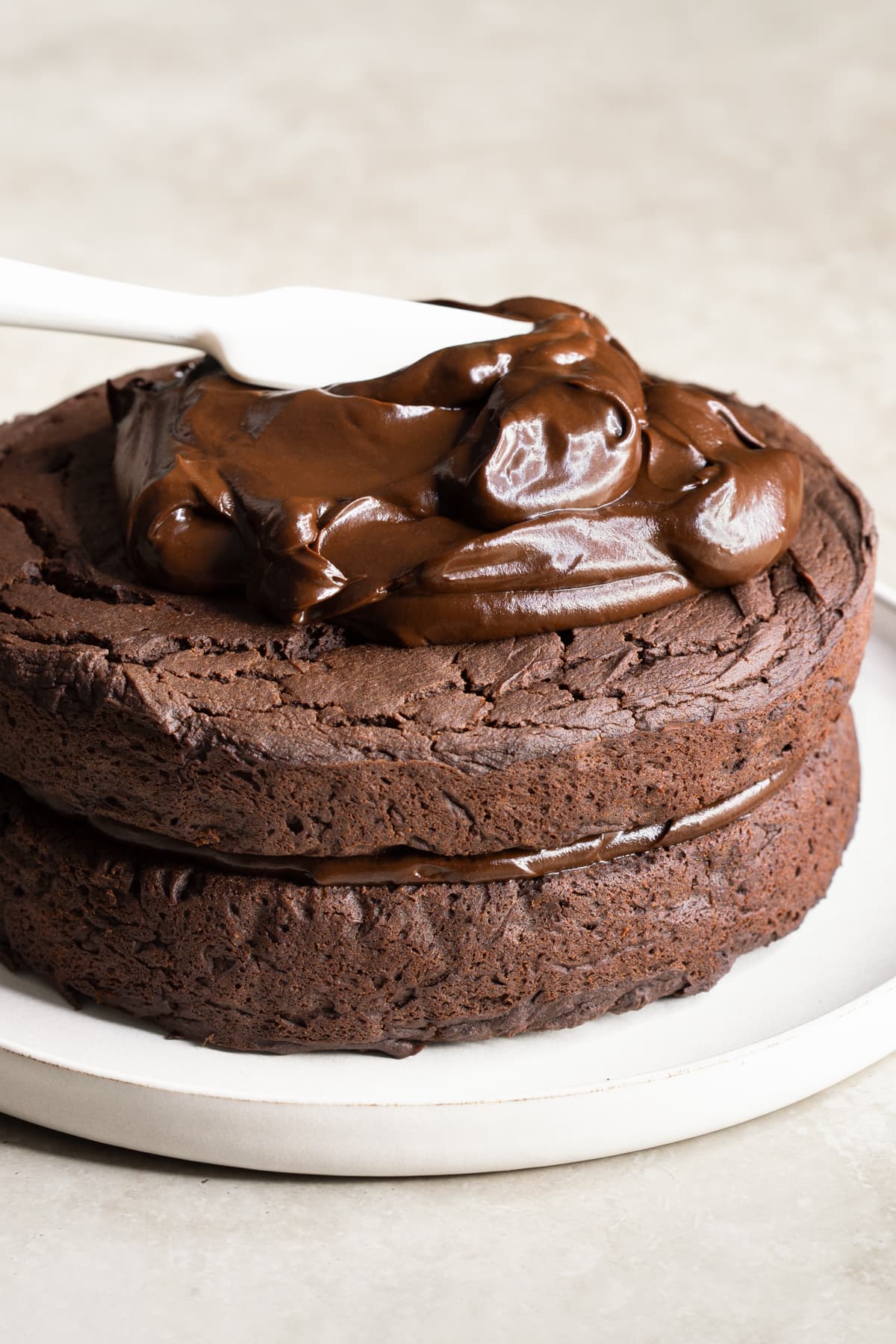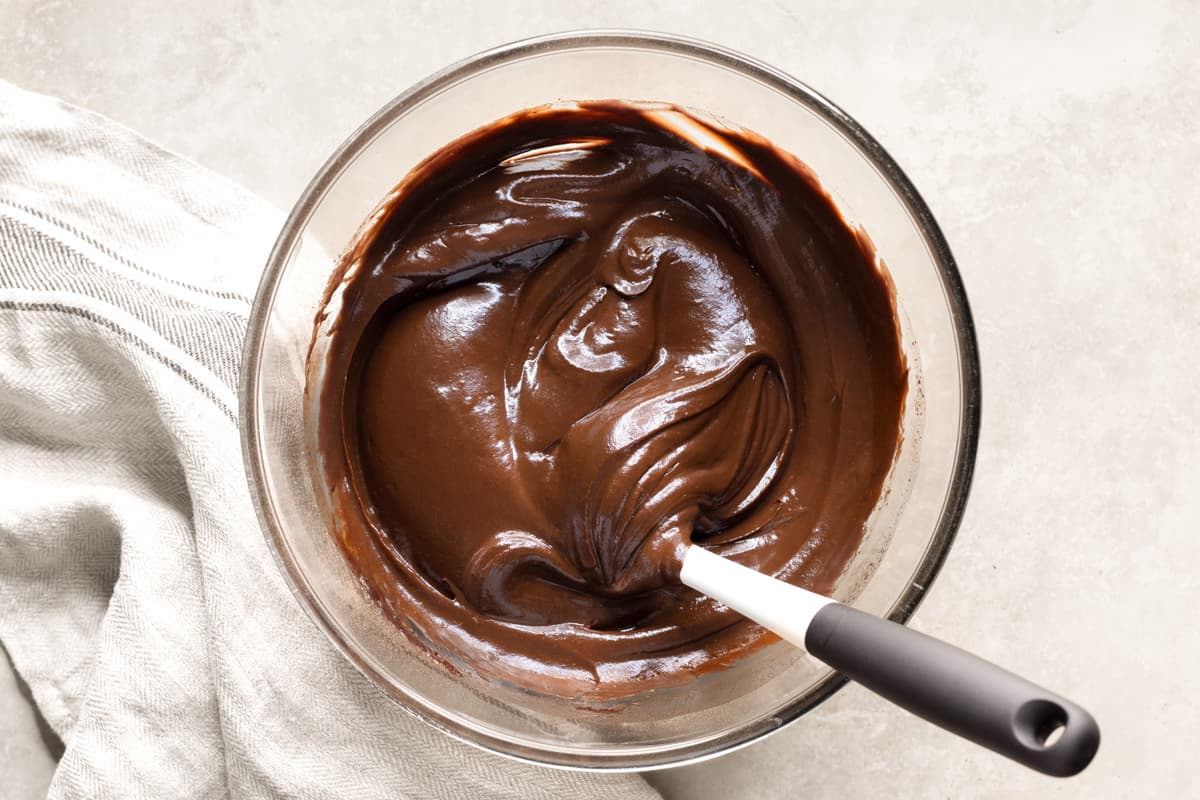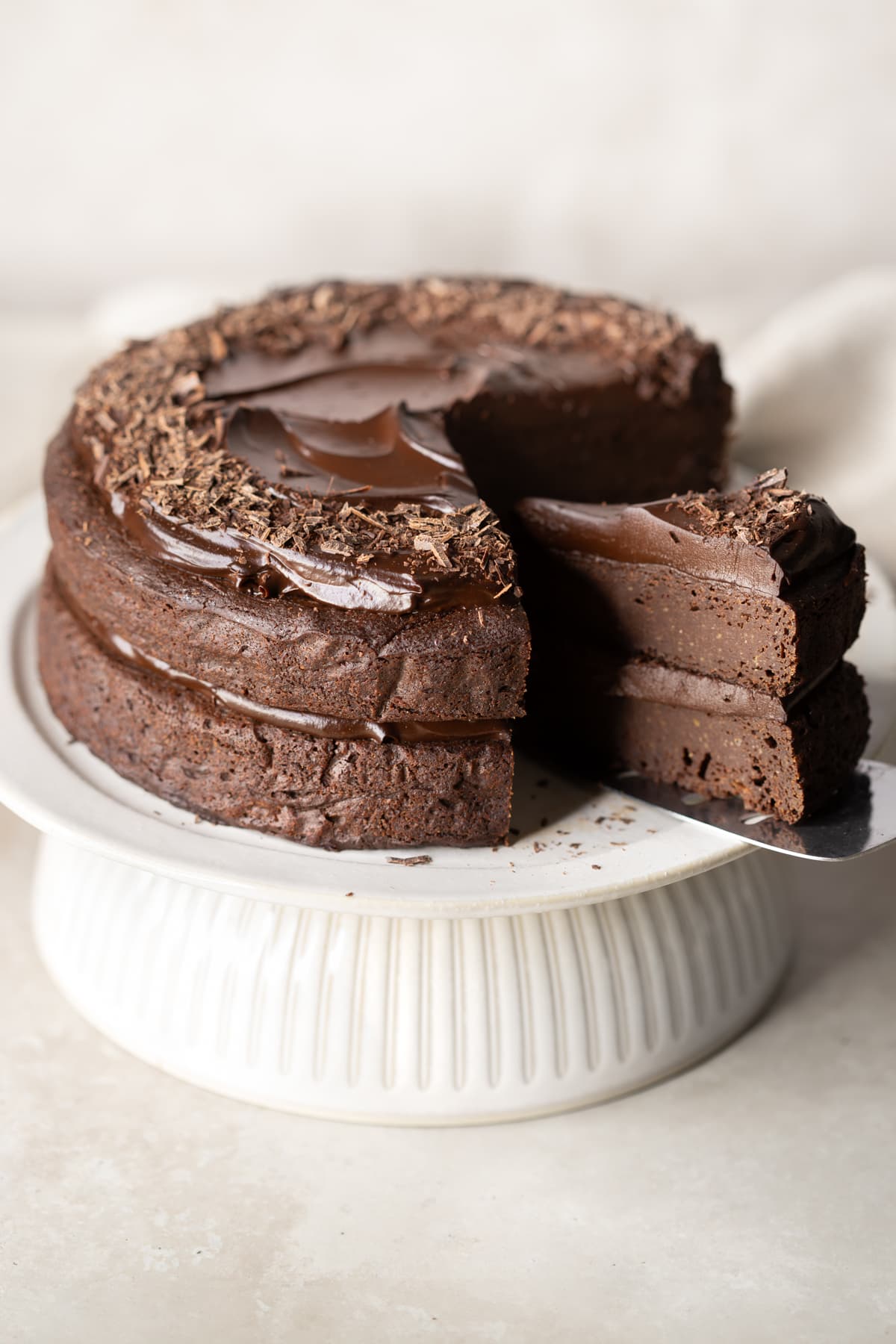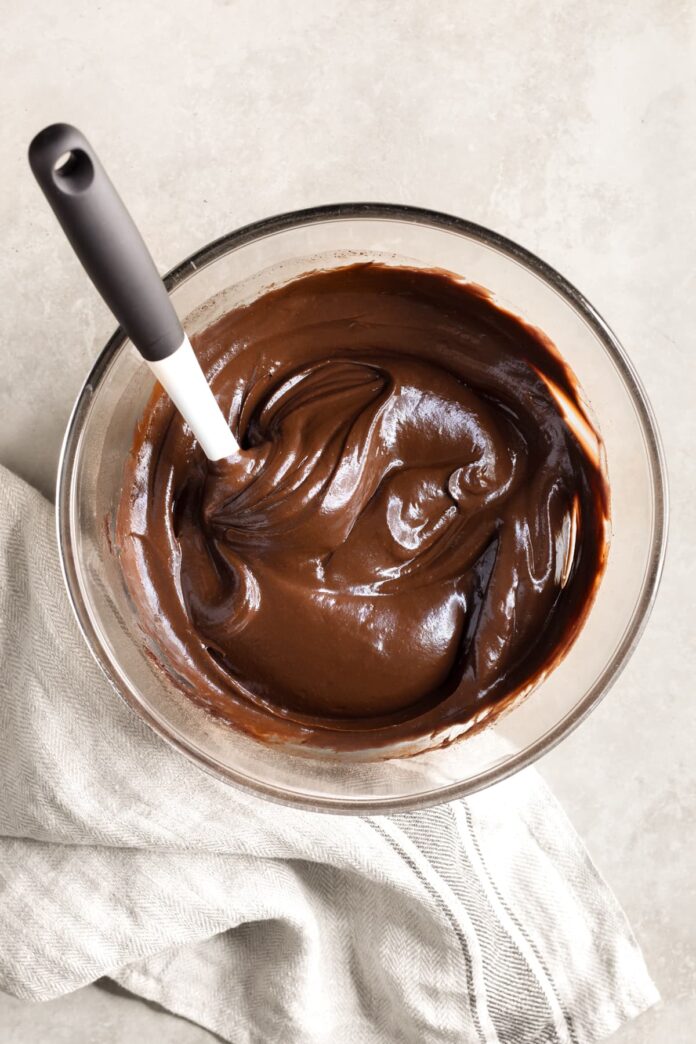This healthy Vegan Avocado Chocolate Frosting without powdered sugar or butter is dairy free, paleo, deliciously rich and creamy. Perfect when you want a decadent chocolate topping with wholesome ingredients to spread over cakes, brownies, cupcakes, or just eat with a spoon.
You don’t need fancy equipment to make this frosting. It comes together easily in a bowl with a simple hand blender, or you can blend it in a food processor. Plus, there is no need to worry about over whipping or over mixing.
Chocolate frosting without powdered sugar
Most frosting recipes call for powdered sugar to sweeten and thicken the frosting. However, this healthy version is sweetened with maple syrup. Maple syrup works in this recipe because avocado is used to thicken the frosting and give it that creamy, silky texture.
Maple syrup is my preferred sweetener for this frosting recipe. Its sweetness cuts through the avocado and cocoa nicely. However, you could use another liquid sweetener like honey, brown rice syrup or a sugar-free syrup if you prefer.

Chocolate frosting without butter
Avocado acts as a whole food, dairy-free replacement for butter in this chocolate frosting recipe. I also add some melted coconut oil, which combines with the avocado to mimic the way buttercream frosting sets firm in the fridge. What you get is a rich vegan icing with a thick and spreadable texture, that also sets just firm enough in the fridge to give a clean cut.
When to make this vegan chocolate frosting
I always make this vegan chocolate frosting right before I want to use it. It’s easiest to spread or pipe as soon as it’s made. Then I transfer my frosted creation to the fridge so the frosting can firm up for easy cutting.

Ingredients for vegan avocado chocolate frosting
- Avocado: Avocado flesh is the base of the frosting and gives a thick and creamy texture. Make sure your avocado is ripe, otherwise it won’t blend smoothly.
- Cocoa powder: Cocoa powder gives the frosting its chocolate flavor. Dutch process cocoa powder is ideal for the smoothest taste. But regular cocoa powder or raw cacao powder will also work. They are just slightly more bitter.
- Maple syrup: I sweeten the frosting with pure maple syrup. Honey or brown rice syrup also work if you prefer. However, maple syrup is my preference because it’s sweet enough to cut through the avocado and cocoa while still being neutral in flavor.
- Coconut oil: Some melted coconut oil is blended into the frosting so that it sets similar to buttercream frosting when chilled in the fridge.
- Vanilla extract: I love to add vanilla to any chocolate recipe. Vanilla paste or fresh vanilla bean seeds would also be amazing if you have them.
- Salt: A pinch of salt is always essential with chocolate in my opinion. It really enhances the flavor. Just add it to taste.

How to store vegan avocado chocolate frosting
You can store leftover chocolate frosting in a sealed container in the refrigerator for up to three days. It will darken in color slightly, but it will still taste good.
However, my favorite way to use up leftover frosting is to spoon it into small glasses and enjoy it as a pudding or thick chocolate mousse, topped with some grated dark chocolate.
What to serve with this chocolate frosting
- Vegan Sweet Potato Bread with Chocolate Chips
- Almond Flour Double Chocolate Zucchini Muffins
- Gluten Free Pumpkin Bread without Dairy
- Flourless Zucchini Brownies
- Gluten Free Gingerbread Cake without Molasses
Check out the Baking Recipes page for more ideas.
Vegan Avocado Chocolate Frosting Recipe
Serves
1 cup
Prep time
10 mins
Cook time
0 mins
Ingredients
- 1 small ripe avocado to give 5 oz / 140 g flesh (see Note 1)
- 1/4 cup / 30 g cocoa powder (see Note 2)
- 1/4 cup / 60 ml / 80 g maple syrup (see Note 3)
- 2 tbsp / 30 ml / 28 g coconut oil, melted
- 1/2 tsp vanilla extract
- Pinch of fine salt
Method
- Place all ingredients into a mixing bowl and blend with a hand blender until smooth. Alternatively, you can blend everything in a food processor.
- Spread or pipe the frosting over your cooled baked goods, sprinkle over any decorative touches like shaved chocolate or crushed nuts, then transfer to the fridge so the frosting can set.
- Once set, the frosting won’t stick to your finger when you gently touch it and you will be able to cleanly cut through it. The frosting will gradually soften back to its original texture at room temperature.
Notes
- Avocado – Make sure your avocado is ripe. If the flesh is still hard, it won’t blend smoothly. I also recommend weighing out your avocado flesh in grams on a food scale for best results. However, if you don’t have a scale, you can taste the frosting once blended and add more cocoa powder and/or maple syrup if it tastes too much like avocado, or add a little extra avocado if it’s not thick enough.
- Cocoa powder – Dutch process cocoa powder works best in this recipe for a smooth and less bitter chocolate flavor. Regular cocoa powder or raw cacao powder can also be used, but you may want to add a little extra maple syrup to offset the bitterness.
- Maple syrup – Taste the frosting once made and stir through a little more maple syrup if you want it sweeter. I think maple syrup works best in this recipe, but you can also use honey, brown rice syrup or sugar-free syrup if you prefer.
- Frosting cakes and cupcakes – The recipe makes about 1 cup of frosting, which should be enough to frost the top of an 8 inch / 20 cm round cake or 6 cupcakes. You can double the recipe to frost the top and middle of a double layer 8 inch / 20 cm round cake or 12 cupcakes.
- When to make the frosting – It’s best to make the frosting right before you want to use it. It has a spreadable consistency as soon as it’s made, then firms up in the fridge.
- Storage – Any leftover frosting can be stored in a sealed container in the fridge for up to 3 days. It will firm up and darken in color slightly, but the flavor won’t be affected.
Nutrition Facts
- Serving size: 2 tablespoons
- Energy: 114 Calories / 477 Kilojoules
- Total Fat: 7.6 g
- Saturated Fat: 3.7 g
- Total Carbohydrate: 10.7 g
- Dietary Fiber: 1.8 g
- Sugars: 6.3 g
- Protein: 1.4 g
- Sodium: 41 mg
- Potassium: 146 mg
